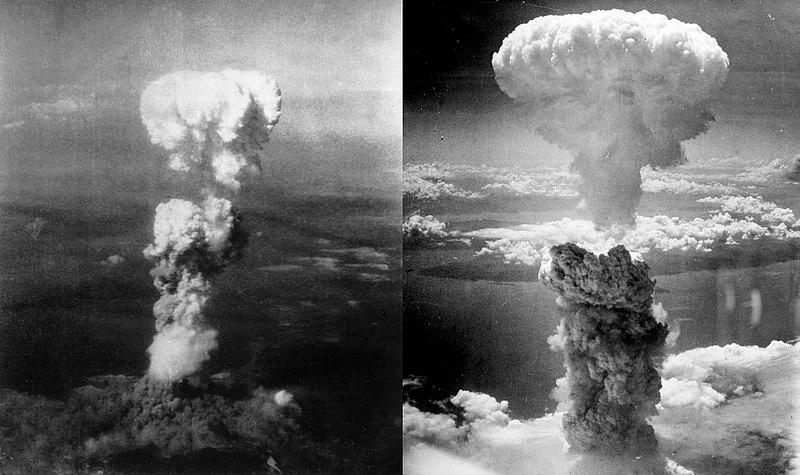The primary distinction between hydrogen and atomic bombs is that hydrogen bombs involve both fission and fusion reactions, whereas atomic bombs only involve fission reactions. Nuclear weapons are destructive weapons that release energy from nuclear reactions. These reactions can be divided into two categories: fission reactions and fusion reactions. In nuclear weapons, either a fission reaction or a combination of fission and fusion reactions is used. In a fission reaction, a large unstable nucleus splits into smaller stable nuclei, releasing energy. Similarly, in a fusion reaction, two types of nuclei combine, releasing energy. Atomic bombs and hydrogen bombs are two types of bombs that contain energy released from these reactions to cause explosions.
What is Hydrogen Bomb?
The hydrogen bomb is an extremely powerful bomb, with its destructive power coming from the rapid release of energy during the nuclear fusion of hydrogen isotopes, specifically deuterium and tritium, using an atomic bomb as a trigger. These bombs are more complex than atomic bombs and can be referred to as thermonuclear weapons. In summary, the fusion reaction begins when two hydrogen isotopes, deuterium and tritium, fuse to form helium, releasing energy. This is why it is called a hydrogen bomb. The center of the bomb contains a large amount of tritium and deuterium. However, nuclear fusion is triggered by several atomic bombs placed in the outer shell of the bomb. These bombs begin to split and release neutrons and X-rays from uranium, initiating a chain reaction and releasing energy. This energy causes the fusion reaction to occur at high pressures and high temperatures in the core region. When this reaction occurs, the released energy causes the uranium in the outer regions of the bomb to undergo fission reactions, releasing more energy. As a result, the core triggers several atomic bomb explosions as well.
What is Atomic Bomb?
Atomic bombs release energy through nuclear fission reactions. The energy source for this is a large unstable radioactive element, such as uranium or plutonium. Since the uranium nucleus is unstable, it breaks down into two smaller atoms, constantly emitting neutrons and energy to become stable. When there are only a small number of atoms, the released energy cannot cause much damage. In a bomb, atoms are tightly packed with the force of the TNT explosion. When a uranium nucleus decays and emits neutrons, they cannot escape. Instead, they collide with another nucleus, releasing more neutrons. All the uranium nuclei will be hit by neutrons in a chain reaction, releasing an exponentially increasing amount of neutrons and energy. Due to the dense TNT packing, these released neutrons cannot escape and all nuclei will break down, releasing a massive amount of energy. The bomb explosion occurs when this energy is released to the outside. For example, the bombs dropped on Hiroshima and Nagasaki during World War 2 were atomic bombs.
Key Takeaways
- Hydrogen bombs involve both fission and fusion reactions, while atomic bombs only involve fission reactions.
- Hydrogen bombs are more complex and release a higher amount of energy compared to atomic bombs.
- The energy sources for hydrogen bombs are the isotopes of hydrogen (deuterium and tritium), whereas the energy source for atomic bombs is unstable nuclei such as uranium and plutonium.
